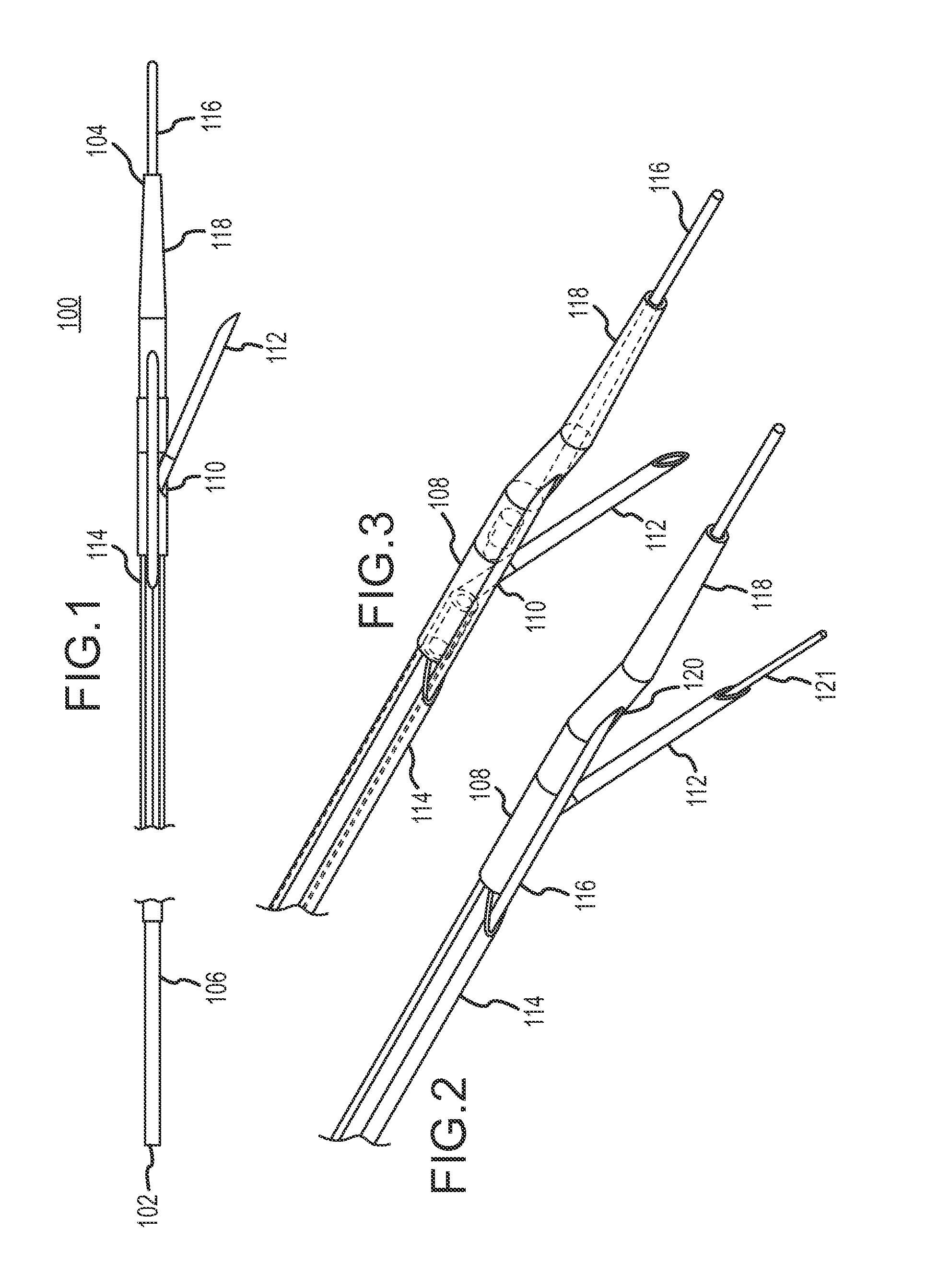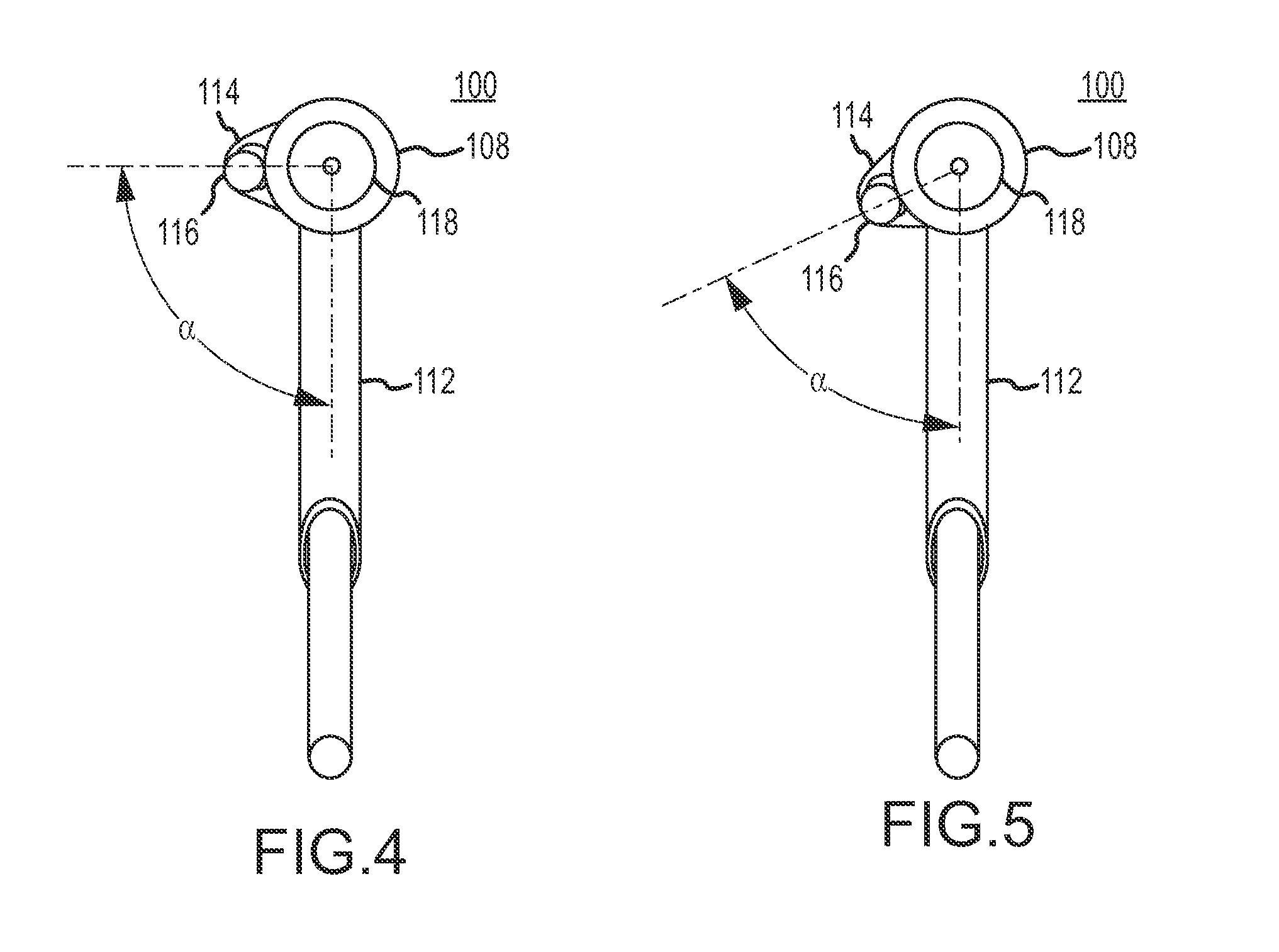Reentry cathether and method thereof
- Summary
- Abstract
- Description
- Claims
- Application Information
AI Technical Summary
Benefits of technology
Problems solved by technology
Method used
Image
Examples
example 1
[0221]Example 1 illustrates the manufacture of a reentry device according to an aspect of the invention. Referring to FIG. 27, the reentry catheter is generally depicted as reference number 2700. A custom manufactured tri-coil shaft 2702 was obtained from Heraeus Medical Components of St. Paul, Minn. The tri-coil shaft has an overall outer diameter of about 0.05 inches, an inner overall diameter of about 0.04 inches and an overall length of about 48 inches. The tri-coil shaft includes three separate coil windings of stainless steel flat wire. The outer winding and innermost windings are manufactured to a specification of 6-Filar close wound, left-hand sided and the inner windings are manufactured at a specification of 6-Filar close wound right-hand sided. The tri-coil shaft is covered or jacketed with PEBAX through a lamination process. The tri-coil shaft has a lumen of about 0.04 inches diameter that extends from a proximal end to a distal end. A polyimide tube 2704 is coupled to t...
example 2
[0226]Example 2 illustrates the manufacture of a reentry device according to an aspect of the invention. Referring to FIG. 28, the reentry catheter is generally depicted as reference number 2800. The device is constructed in the same manner as described for Example 1 using the same components including a PEBAX jacketed tri-coil shaft 2802, rigid shroud 2804 with a lateral port and internal deflection ramp, a cylindrical marker band 2806, and a polyimide exchange port 2808 with the exception that a molded end portion is not overmolded on the distal end of the rigid shroud. Referring to FIG. 28, there are a number of visualization techniques that may be used with this catheter. Here a fluoroscopy visualization method was used. The exchange guidewire 2810 and / or marker band 2806 can be used as a visual cue regarding the orientation of the lateral port with respect to the true vessel lumen. In this configuration, the reentry catheter is shown in the correct orientation for deployment of...
PUM
 Login to View More
Login to View More Abstract
Description
Claims
Application Information
 Login to View More
Login to View More - R&D
- Intellectual Property
- Life Sciences
- Materials
- Tech Scout
- Unparalleled Data Quality
- Higher Quality Content
- 60% Fewer Hallucinations
Browse by: Latest US Patents, China's latest patents, Technical Efficacy Thesaurus, Application Domain, Technology Topic, Popular Technical Reports.
© 2025 PatSnap. All rights reserved.Legal|Privacy policy|Modern Slavery Act Transparency Statement|Sitemap|About US| Contact US: help@patsnap.com



